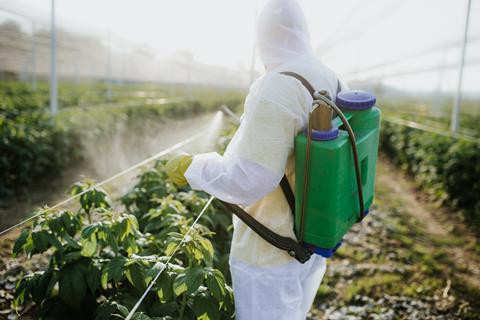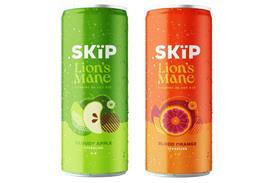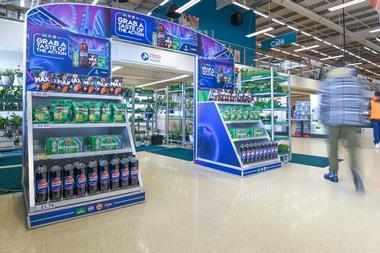
Foods imported into the UK have been found to have almost twice as many pesticides in them than domestically grown produce, according to new government testing.
Recent research conducted by the Expert Committee on Pesticide Residues in Food (PRiF) found that 55% of imported foods of non-animal origin contained “multiple residues” of pesticides, compared with 31% for UK-grown.
Additionally, three times the amount of imported produce was found to contain levels of individual pesticides that exceed the UK’s legal safety limits, noted analysis by campaign group Pesticides Action Network UK of the government samples.
The group claimed the pesticides, found in commonly eaten foods like citrus fruit, grapes and beans, posed a risk to consumers and were linked to cancer and other health problems.
“While the results for UK produce are also concerning, when it comes to pesticides that pose a risk to consumer health, imports tend to be far worse than food grown here in the UK,” said Nick Mole, policy affairs lead at PAN UK.
“The imported food tested by the government contained almost three times the number of highly hazardous pesticides, including carcinogens, endocrine disruptors and neurotoxins,” he added.
“With rates of diseases such as cancer and Parkinson’s on the rise, we should be doing everything we can to reduce our chemical exposure. But the UK government is allowing larger amounts of chemicals to appear in an ever-growing list of common food items. They urgently need to reverse this current trend.”
Banned chemical usage
Imported food was also found to contain residues of 48 pesticides that are not approved for use by British farmers. PAN claimed this gave foreign growers a “competitive advantage because they can farm more cheaply using chemicals banned in Great Britain due to the harms they cause to human health and the environment”.
Unapproved pesticides detected included carbaryl and diazinon, and the highly bee-toxic neonicotinoid imidacloprid – banned for use on UK crops since 2018 – which was found on produce including potatoes, peas and grapes imported from a range of countries.
PAN also claimed Indian beans were “the most problematic, with illegally high levels of residues detected in 10 of the 25 samples tested”. It warned that food imports from India were likely to increase as the UK is in the midst of negotiating a trade deal with the Asian nation.
Environmental campaigners have for years warned of the risk of allowing food imports from India and other countries with laxer regulation around pesticide usage into the country.
Mole added: “We’ve long been concerned that new trade deals signed by the UK since EU exit pose a major risk to the health of British consumers. This is especially true when it comes to countries like India that struggle with high pesticide residues in their food exports.
“It also undermines British farmers at a time when we are asking them to produce more sustainably,” he added.
Read more: India trade deal ‘could expose UK food to harmful chemicals’
Mole said there were concerns around whether British border controls were “robust enough to detect food imports contaminated with pesticides and prevent them from reaching our plates”.
“When we’ve pointed out these risks to the UK government, they refuse to take them seriously. Given that [this week’s] findings are based on imports that have already made it past our borders, we strongly urge the government to take action to protect British consumers.”
A Defra spokesperson said: “We have strict limits on pesticide residues in place, set after rigorous risk assessments to ensure levels are safe for the public. These limits apply to both food produced domestically and imported from other countries.”
In 2023, the government tested a total of 917 samples of UK grown food of non-animal origin, 286 of which contained multiple residues, and a total of 1,046 samples of imported food of non-animal origin, 577 of which contained multiple residues.
Testing also detected exceedances of Maximum Residue Levels (MRLs) – the highest level of a pesticide residue that is legally allowed in or on food or animal feed when a pesticide is applied correctly – in eight samples of UK produce, compared with 24 samples of imported produce.
The GB and NI pesticide maximum residue level regimes, overseen by the government’s Health & Safety Executive (HSE), help protect public health by setting limits and controls on the amounts of pesticides in food.
MRLs are set so food is safe for consumers, but they are usually set well below the level considered safe for people to eat, Defra has noted. Additionally, the UK has some of the lowest thresholds for MRLs.
HSE’s monitoring also considers the possible implications to health of more than one pesticide being found in samples.
Read more: Potentially hazardous chemicals found on supermarket fruit & vegetables
The most recent quarterly testing results also found that 98% of samples were at or below the MRL in Q1 2024. Even in instances where the legal MRL is exceeded, HSE “rarely” finds any likely risk to the health of people who have eaten the food.
Mole argued that it was “impossible to say” whether the residues found were “safe or not”: “Pesticides are only tested and approved individually, the reality is that we are exposed to many pesticides and other chemicals and little is known about the combinatory effects of ingesting cocktails of chemicals, including pesticides, over the long term.”
He added: ”PAN UK believes that the public has a right to know what is in and on the food that it consumes. Without such knowledge the public cannot make informed decisions about its food buying choices.”
HSE may also take action in collaboration with the Food Standards Agency if evidence suggests pesticides are not being applied correctly or if there is a risk to consumers.
The FSA is also able to introduce additional checks where needed in imported foods for pesticides and other food safety risks, and can remove items that may be found harmful from the market.
PAN UK’s ‘Dirty Dozen’
PAN UK publishes an annual list of the produce “most likely to contain cocktails of multiple pesticides” based on its analysis of government sample testing.
Topping the list this year is soft citrus, which includes satsumas, tangerines and clementines. Some food items showed residues of up to 12 different pesticides, it said.
Here is the full ranking:
| Product (Terms used below are taken verbatim from government reporting) | Percentage of samples with multiple pesticide residues present | Highest number of different pesticides found in one sample (1 kg) – with country of origin | |
|---|---|---|---|
|
Soft citrus |
96% |
9 |
South Africa |
|
Oranges |
95% |
9 |
South Africa |
|
Lemon |
89% |
9 |
South Africa |
|
Grapes |
87% |
13 |
Lebanon |
|
Pears |
81% |
10 |
Turkey |
|
Pulses |
63% |
5 |
UK |
|
Bread |
54% |
4 |
UK & France |
|
Carrots |
38% |
5 |
UK & Spain |
|
Spring onions |
38% |
4 |
UK |
|
Beans (dried) |
35% |
9 |
US |
|
Peas |
34% |
6 |
Peru |
|
Beans |
29% |
12 |
Thailand |



















No comments yet